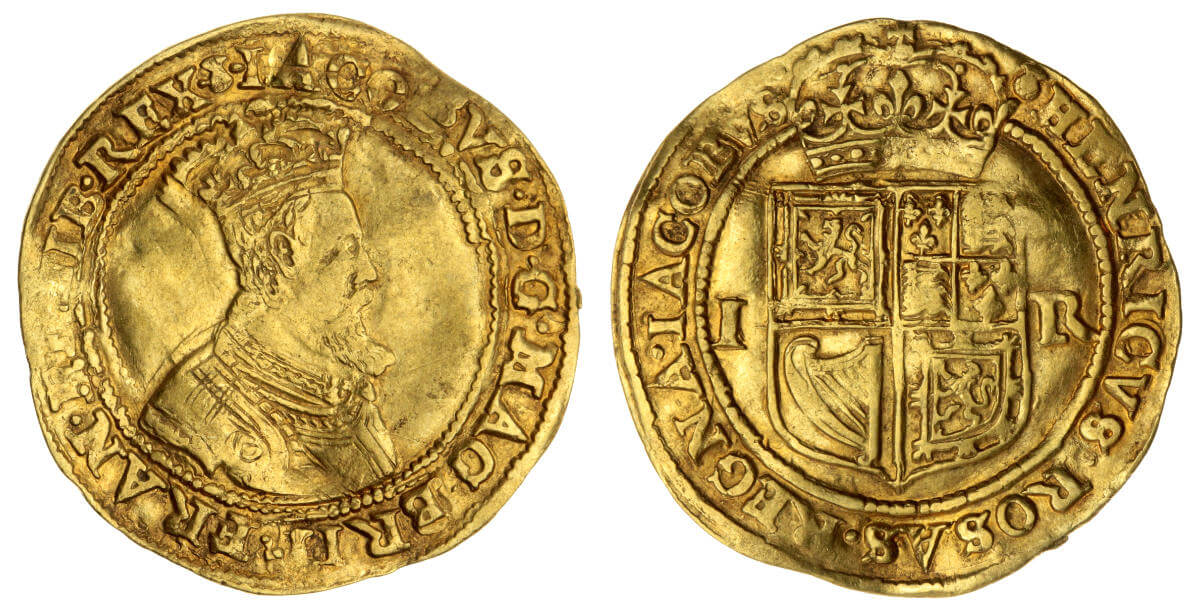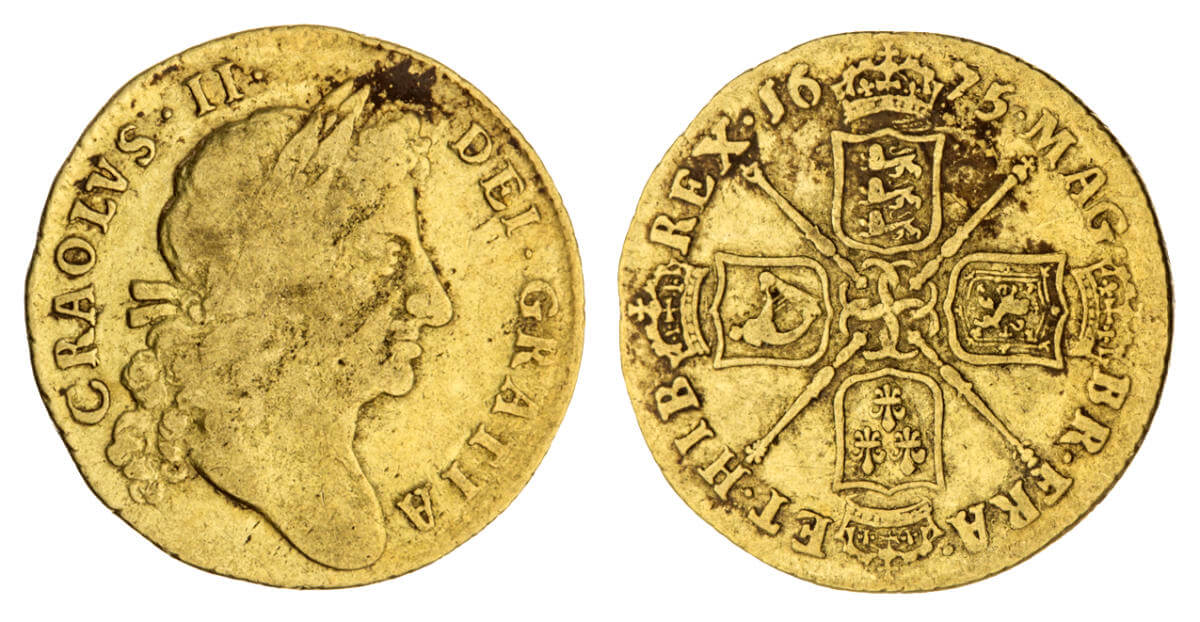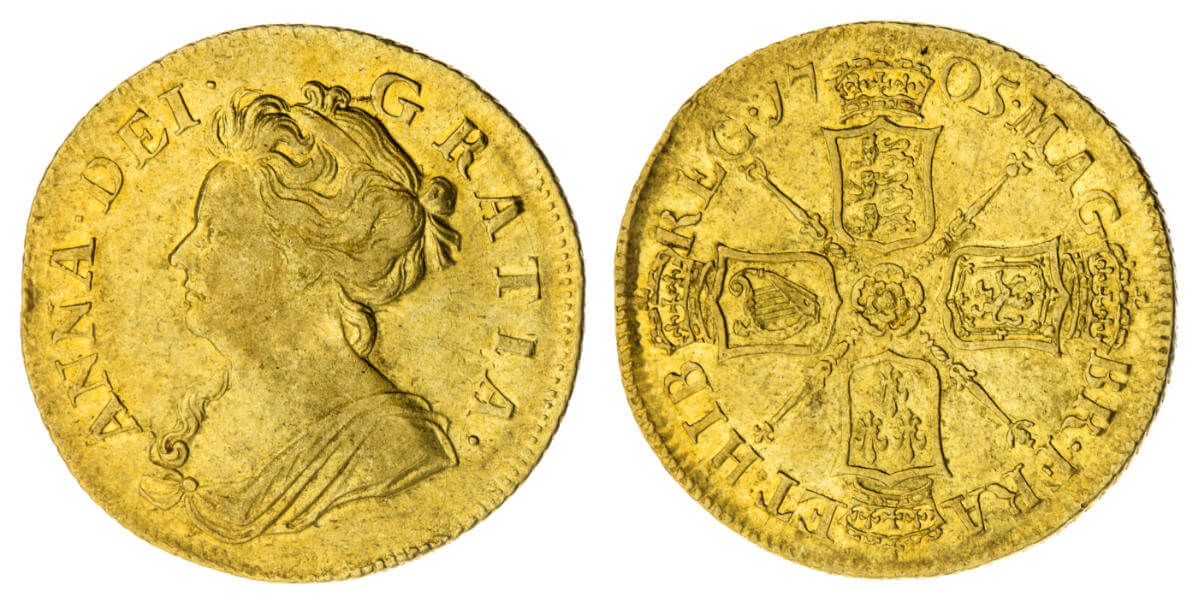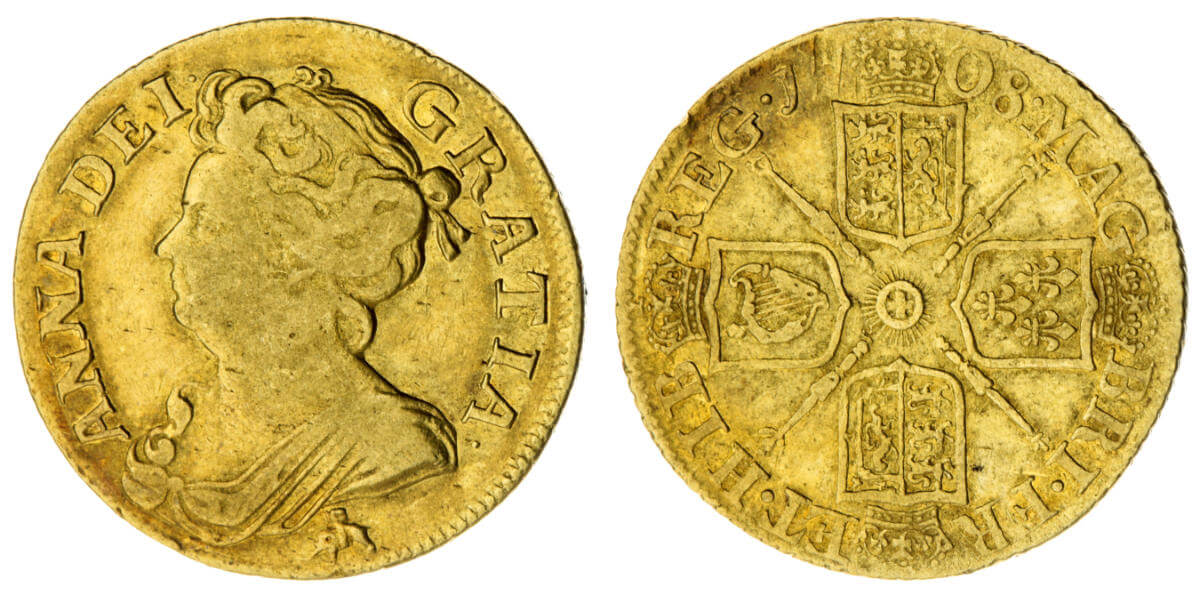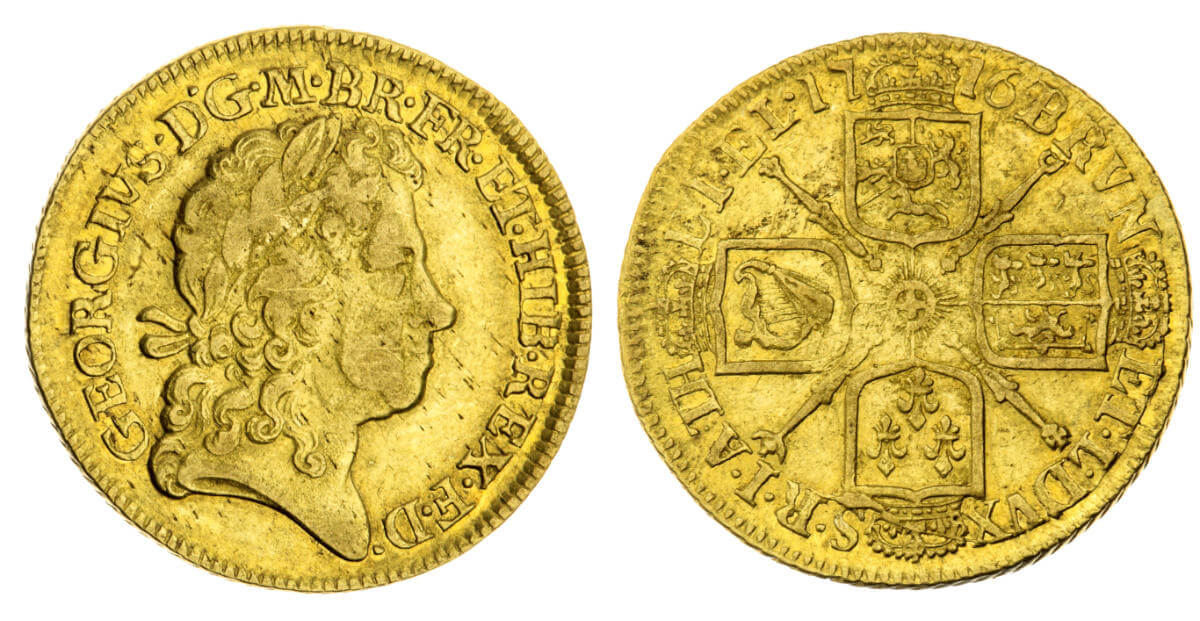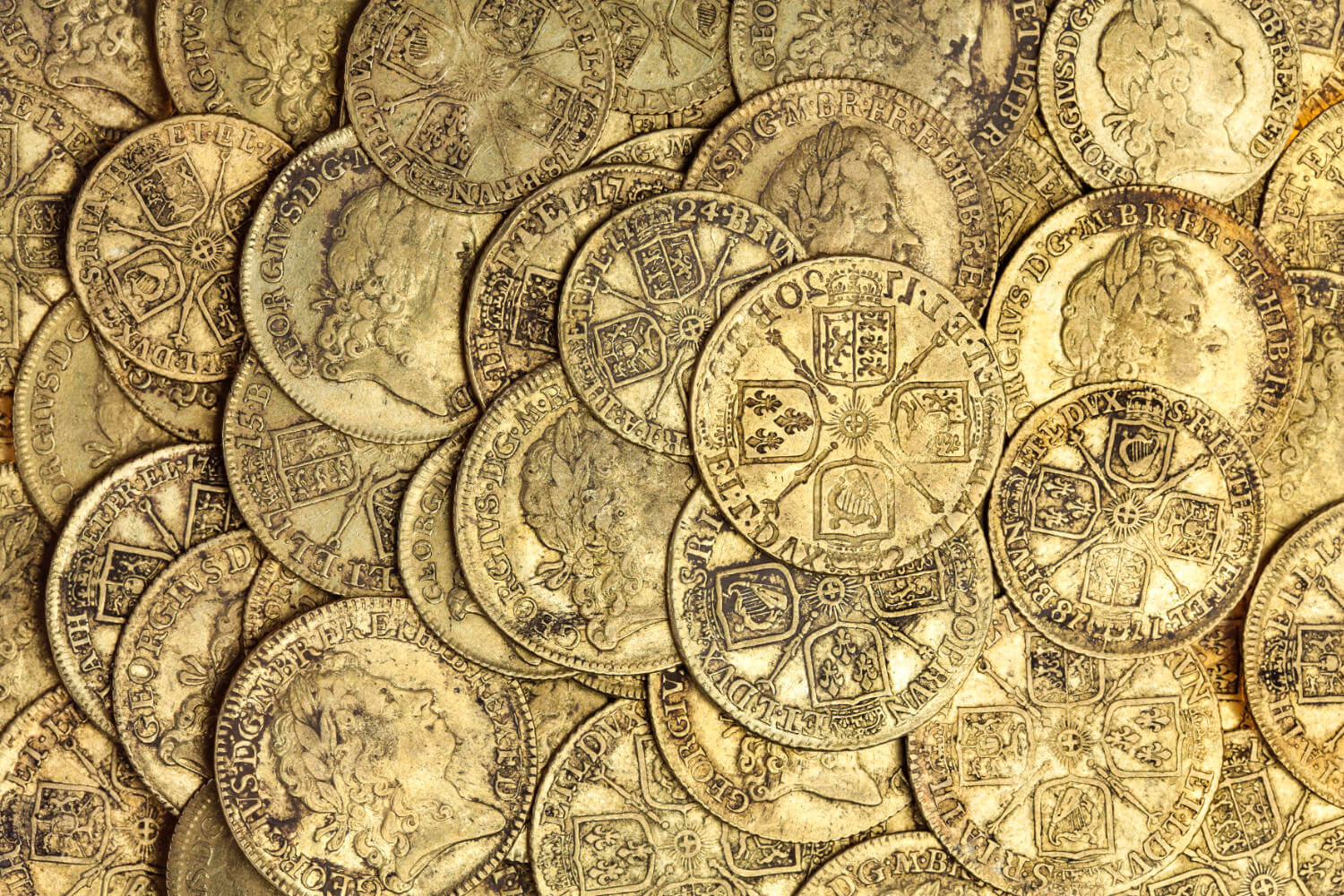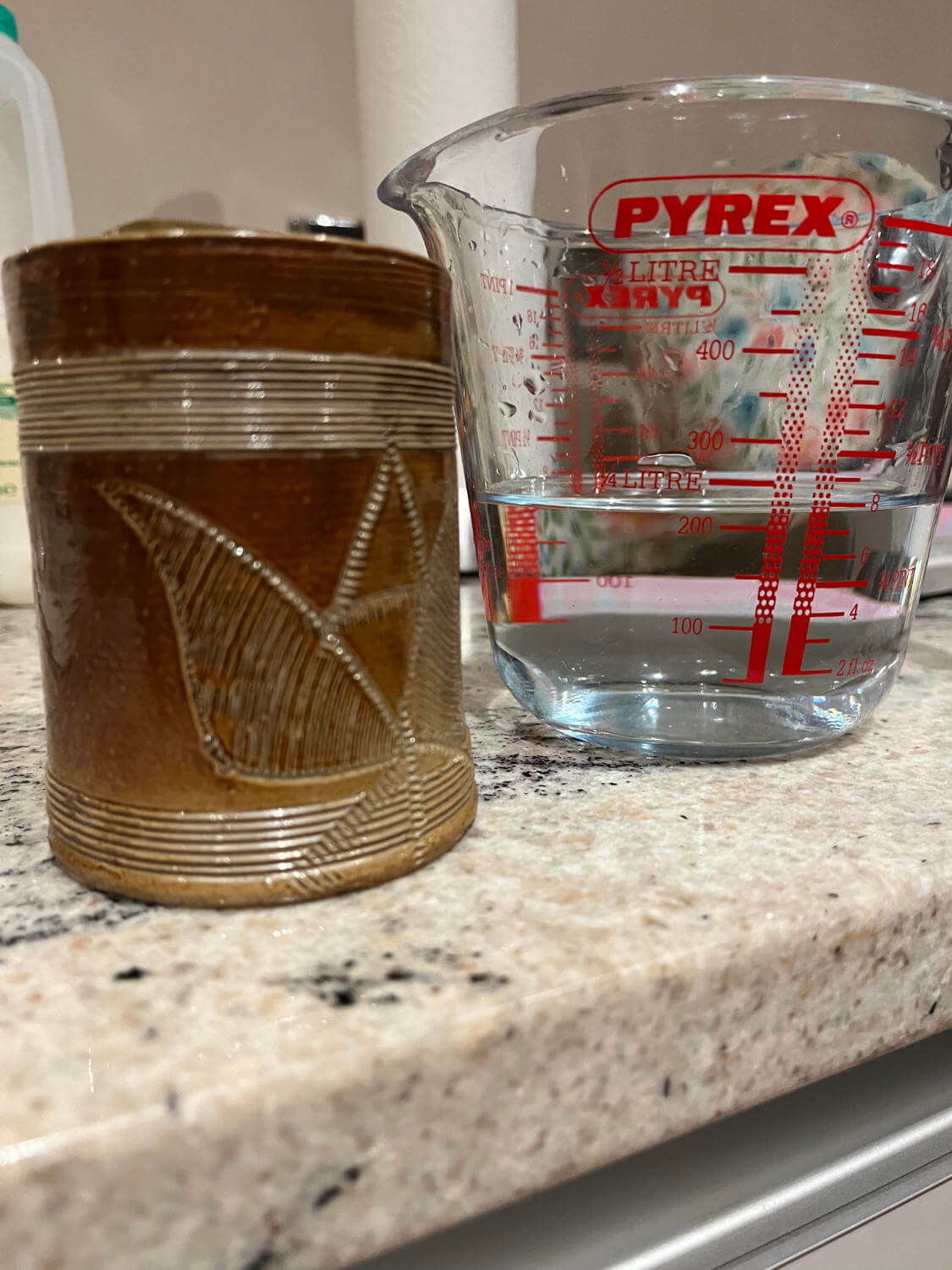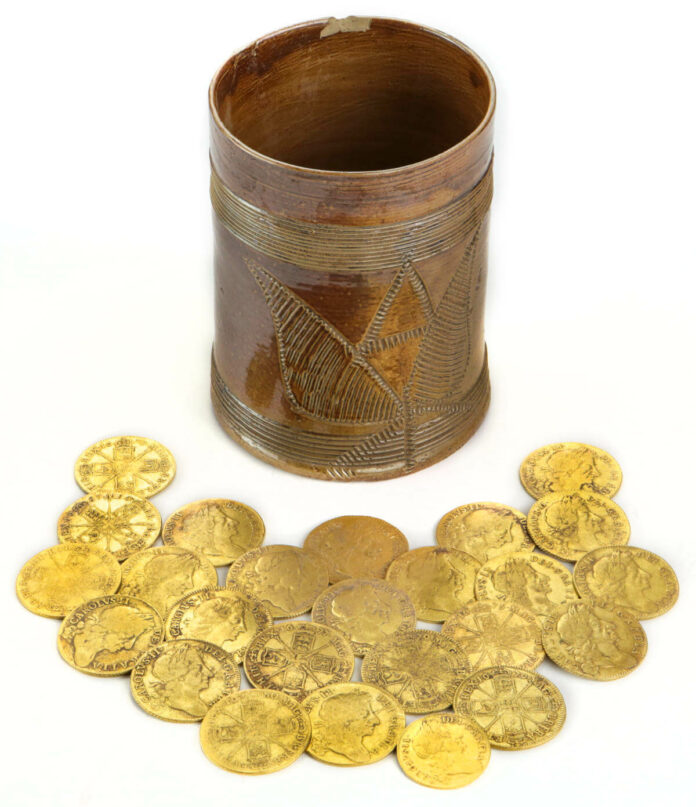
The ultimate dream of many home owners: finding a treasure while remodelling your old house. In the summer of 2019, this dream came true for a couple. Their house in Ellerby, North Yorkshire (England), is located near the Scottish border and dates from the 18th century. On 13 July 2019, they were ripping up their kitchen floor when they came across a pottery cup in the size of a can. It did not contain a historical soft drink but 266 gold coins – one of the largest 18th-century gold coin hoards in England.
Numismatist Gregory Edmund of the Spink auction house in London exactly remembers how he met the couple at a hotel. They pulled dozens of coins from their bag and spread them out in front of him. Edmund was speechless. The finders hadn’t even reported the hoard. First, Spink’s team examined the coins, then they informed the relevant Find Liaison Officers of the Portable Antiquities Schemes of their results. At first, all seemed clear: an official treasure, after all, it consisted of gold coins.
What Makes the Coins of the Ellerby Hoard so Valuable?
In fact, most of the coins were older than 300 years and thus could have been declared Treasure right away. However, this initial assessment was soon revoked because it is not the age of the individual coins that matters for the legal classification but that of the hoard. And the hoard was found to be “only” 292 years old. Only one Brazilian coin went to the British Museum, all other coins were not declared Treasure. On 7 October 2022, Spink offered the coins at auction. With a total estimate of £204,770, the hoard fetched £754,320! This is particularly remarkable because most coins weren’t of great condition. You can see that they had been in use for a long time. So what made them so valuable? Gregory Edmund has a theory: “The coins were perhaps very ordinary in one sense, but the story was extraordinary and that is what achieved the mind-blowing result … that very unassuming and scarcely believable tale is what has made the coins so valuable today.”
From When Is the Ellerby Hoard?
But what do we know about the hoard? This is where the story gets really mysterious. The coins stem from the period between 1610 and 1727. We know that the house was owned by Joseph Fernley and Sarah Maisters at the time. Joseph had married into the Maisters family in 1694, an influential dynasty of merchants, which had been Members of Parliament for generations. Joseph died in 1725, Sarah continued to live near Ellerby until 1745. Then the line of the family died out, and the knowledge about the hidden coins was probably lost.
For today’s numismatist, the hoard really is a treasure. It contains previously unknown mint errors (for example a Guinea with the misspelled name of Charles II) and rare issues (for example a Scottish 6-pound coin from the early 17th century).
Who Hid the Ellerby Hoard?
The first question that arises with such treasure finds is always: who was the owner? Who hid the hoard, and why? Unfortunately, there’s usually no definite answer to these questions.
In the Ellerby case, we can assume that Sarah Maisters hid the coins. But why? As a member of a politically well-informed family, she might have feared a war with France and an invasion by the enemy. Another hypothesis is that she distrusted the newly founded Bank of England and the then widespread paper money – after all, the South Sea bubble burst in 1720, destroying trust in stocks. Many coins are from the time of the civil war and the hoard includes hammered as well as machine-minted issues.
While the gold coins were now sold in the Spink sale, the lucky couple kept a keepsake for themselves: the cup in which the treasure was hidden. It is probably from the time of Queen Anne and someone might have taken it from a pub – perhaps also as a keepsake.
On the Spink website you can still find the entire online catalogue including results.
The PAS website lists the Ellerby hoard.





